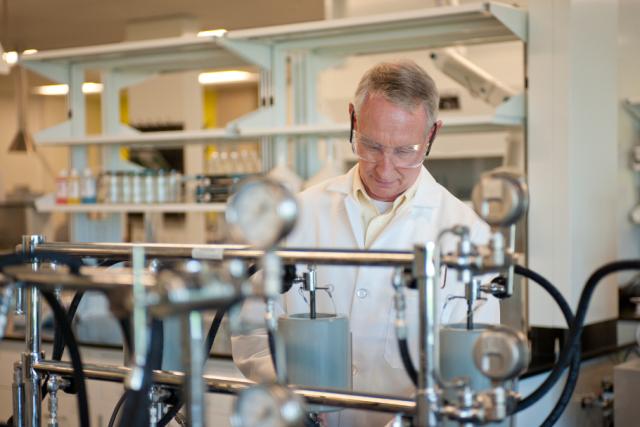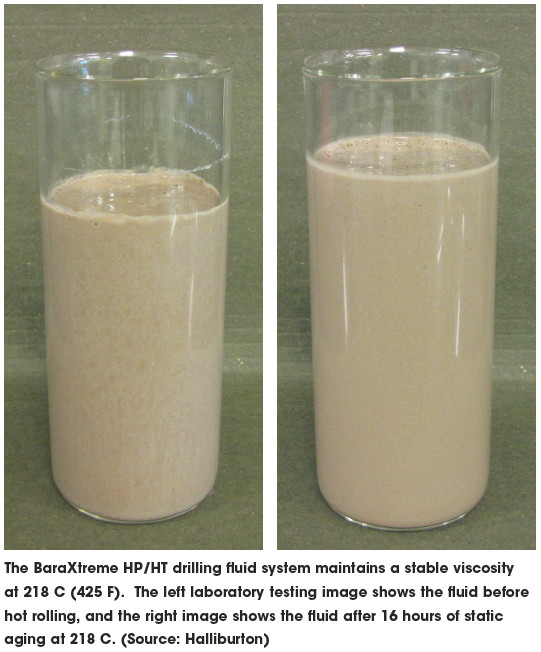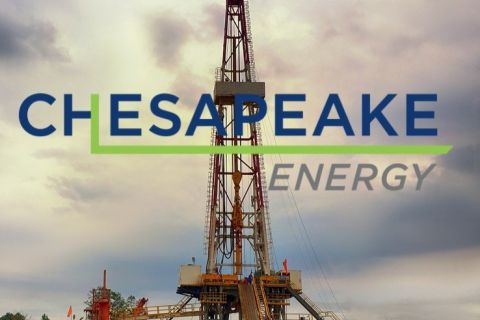
BaraXtreme and BaraDrilN X have been designed to exhibit excellent thermal stability. (Source: Halliburton)
In recent years operators have shown increased interest in drilling wells involving HP/HT conditions. The definition of HP/HT reservoirs involves temperatures greater than 149 C (300 F) and pressures in excess of 10,000 psi. Because of the nature of the deposits and formations, the abnormal thermal and pressure gradients are associated with the reservoir more than the overburden, making them even more challenging.
Oil-based fluids are generally preferred when drilling these wells because of advantages over water-based fluids such as better thermal stability, fluid loss control, lubrication, shale stabilization, etc. However, environmental and cost concerns associated with oil-based fluids have led to increased interests in using water-based fluids for HP/HT wells.
Challenges in HP/HT water-based fluids
Traditionally, water-based fluids suitable for HP/HT drilling have relied on clay minerals such as bentonite to provide an inexpensive means to impart adequate viscosity, suspension and filtration control to the drilling fluid. While bentonite readily hydrates to function as a robust viscosifier for freshwater muds, increasing salinity leads to ineffective clay swelling and flocculation, resulting in reduced viscosity and high fluid loss. In addition, thermally induced flocculation of the clays and gelation of the fluids become significant at high temperatures. Even though flocculation can be controlled through the appropriate use of deflocculants, the increased colloidal content required for such dispersed systems decreases ROP. Thus, it is desirable to keep the percent solids by volume content low to help maximize the drilling rate.
High-performance water-based drilling fluids use high-quality biopolymers and modified starches for viscosity and fluid loss control. These, combined with high-performance shale inhibitors, result in faster ROP, torque and drag reduction, and improved wellbore stability. Typically, high-performance fluids are easier to maintain, with solids control equipment leading to lower levels of dilution and lower fluid volumes while drilling. However, due to the usage of biopolymers, these high-performance water-based drilling fluids are realistically temperature limited to 149 C; at higher temperatures viscosity and fluid loss control both suffer substantially.
Reservoir drilling fluids, or drill-in fluids, are used to drill the reservoir section of conventional production wells. These fluids are specifically designed to minimize formation damage and facilitate wellbore cleanup by using brines to achieve a desired fluid density and rely on acid-soluble solids such as calcium carbonate for bridging pore spaces. Similar to high-performance water-based fluids, the drill-in fluids also use biopolymers to provide viscosity and fluid loss control. As a result, these water-based drill-in fluids are also temperature- limited to 149 C.
Throughout the years a number of synthetic polymers have been developed for HP/HT water-based drilling fluids. Although some polymers show good thermal stability at temperatures above 204 C (400 F), limitations still persist. For instance, most of these polymers are specifically designed as filtration control additives for conventional water-based drilling fluids and must still rely on minerals such as bentonite to achieve desired fluid properties. A further drawback of these polymers is that they are generally salt- and pH-sensitive, which limits their utility.
Improved drilling fluid systems
The key to improving the thermal stability of high-performance water-based fluids and drill-in fluids is to replace the biopolymers with high temperaturetolerant synthetic polymers. New polymers capable of meeting demanding fluid criteria—BDF- 637 and BDF-638—were successfully developed and subsequently commercialized. Both polymers act as dual-function additives, providing viscosity and fluid loss control at high temperature, and both are highly pH- and salt-tolerant. As a result, two high-temperature water-based drilling fluids were successfully developed. The BaraXtreme system is a high-performance clay-free water-based drilling fluid using BDF-637 polymer, and the BaraDrilN X system is a high-temperature drill-in fluid using either BDF-637 for monovalent brines or BDF-638 for divalent brines.

The BaraXtreme clay-free system functions as a high-temperature and high-performance water-based mud. Formulated with BDF-637, the fluid system provides viscosity and filtration control up to 227 C (440 F) with excellent solids suspension without the need for clay addition. The high-performance drilling fluid system can be readily formulated in freshwater or with monovalent salts like sodium chloride. It exhibits good shale inhibition and is environmentally acceptable for land and offshore drilling.
BaraDrilN X fluid is an innovative engineered fluid system that combines the benefits of minimized formation damage, thermal stability and high performance. It also provides an environmentally acceptable vehicle for the delivery of openhole and cased-hole completions in high-temperature reservoirs. The system is either formulated with BDF-637 for lower density monovalent brines or BDF-638 for high-density divalent brines. The fluid is stable at 232 C (450 F), which increases the temperature limit of more typical drill-in fluids by 66 C (150 F). In addition, it provides excellent fluid loss control even after being exposed to the extreme high temperatures. The fluid is nondamaging from the results of core flow testing, showing more than 100% return permeability after acid treatment.
Successful in the field
In October 2016 an operator was drilling an exploratory well in the Panna Formation in India. The formation pressure was in the range of 14.4 lb/gal to 14.5 lb/gal with a bottomhole temperature of 152 C (305 F); the well was planned to be tested at 15.2 lb/gal. Initially, the operator planned to use cesium formate brine as the testing fluid but was dissuaded by the very high cost. As a result, the Baroid team recommended using BaraDrilN X as a HP/HT testing fluid. The fluid used 14.2 lb/gal calcium bromide brine weighted with MICROMAX to achieve 15.2-lb/ gal density.
The formulated system showed good fluid properties, including HP/HT testing on a Fann 75 at 149 C and 8,000 psi, with less than 8 mL of HP/HT fluid loss and no sag after static aging at 152 C for three days. Fluid mixed at the operator’s rig site also displayed the same acceptable properties; furthermore, it proved to be extremely easy to apply in the field environment. The fluid was pumped downhole and was subjected to static high temperature of 154 C (310 F) for nine days. Intermittent circulation showed no discernable density or viscosity variations or flat spots, again demonstrating the fluid’s excellent stability. The well test was deemed a success by the operator.
These new fluids exhibit excellent thermal stability, increasing temperature limits by 66 C compared to conventional biopolymer- and polymer-based high-performance fluids while at the same time providing good fluid loss control and solids suspension. It is anticipated that they will extend the envelope in which water-based drill-in fluids can be successfully used to drill high- and ultrahigh-temperature wellbores and reservoirs.
Recommended Reading
The OGInterview: Petrie Partners a Big Deal Among Investment Banks
2024-02-01 - In this OGInterview, Hart Energy's Chris Mathews sat down with Petrie Partners—perhaps not the biggest or flashiest investment bank around, but after over two decades, the firm has been around the block more than most.
Kissler: OPEC+ Likely to Buoy Crude Prices—At Least Somewhat
2024-03-18 - By keeping its voluntary production cuts, OPEC+ is sending a clear signal that oil prices need to be sustainable for both producers and consumers.
Buffett: ‘No Interest’ in Occidental Takeover, Praises 'Hallelujah!' Shale
2024-02-27 - Berkshire Hathaway’s Warren Buffett added that the U.S. electric power situation is “ominous.”
The One Where EOG’s Stock Tanked
2024-02-23 - A rare earnings miss pushed the wildcatter’s stock down as much as 6%, while larger and smaller peers’ share prices were mostly unchanged. One analyst asked if EOG is like Narcissus.
Chesapeake Slashing Drilling Activity, Output Amid Low NatGas Prices
2024-02-20 - With natural gas markets still oversupplied and commodity prices low, gas producer Chesapeake Energy plans to start cutting rigs and frac crews in March.





